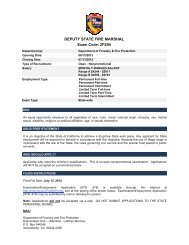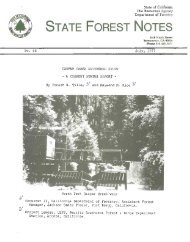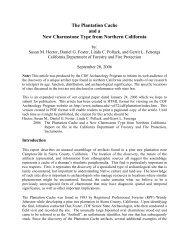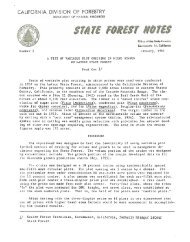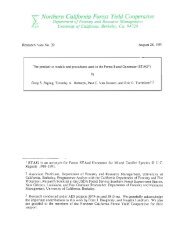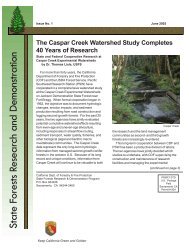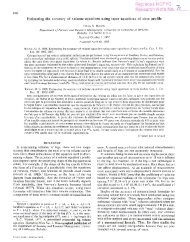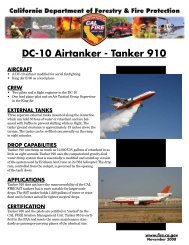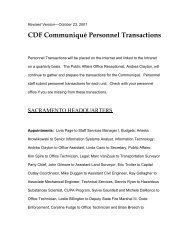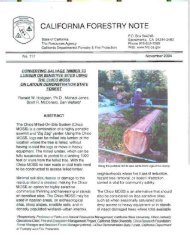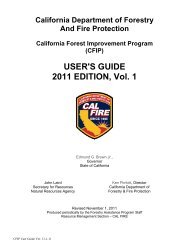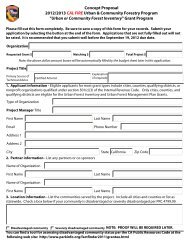You also want an ePaper? Increase the reach of your titles
YUMPU automatically turns print PDFs into web optimized ePapers that Google loves.
3. The restrictions in subparagraphs 1. and 2. do not apply to helicopters.<br />
Helicopters must remain clear <strong>of</strong> clouds and may operate in Class B, Class C, Class D<br />
and Class E surface areas with less than 1 statute mile visibility.<br />
b. When a control tower is located within the Class B, Class C, or Class D surface area,<br />
requests for clearances should be to the tower. In a Class E surface area, a clearance may<br />
be obtained from the nearest tower, FSS, or center.<br />
c. It is not necessary to file a complete flight plan with the request for clearance, but<br />
pilots should state their intentions in sufficient detail to permit ATC to fit their flight into<br />
the traffic flow. The clearance will not contain a specific altitude as the pilot must remain<br />
clear <strong>of</strong> clouds. The controller may require the pilot to fly at or below a certain altitude<br />
due to other traffic, but the altitude specified will permit flight at or above the minimum<br />
safe altitude. In addition, at radar locations, flights may be vectored if necessary for<br />
control purposes or on pilot request.<br />
NOTE -<br />
The pilot is responsible for obstacle or terrain clearance.<br />
REFERENCE -<br />
14 CFR Section 91.119.<br />
d. Special VFR clearances are effective within Class B, Class C, Class D and Class E<br />
surface areas only. ATC does not provide separation after an aircraft leaves the Class B,<br />
Class C, Class D or Class E surface area on a Special VFR clearance.<br />
e. Special VFR operations by fixed-wing aircraft are prohibited in some Class B and<br />
Class C surface areas due to the volume <strong>of</strong> IFR traffic. A list <strong>of</strong> these Class B and Class C<br />
surface areas is contained in 14 CFR Part 91, Appendix D, Section 3. They are also<br />
depicted on sectional aeronautical charts.<br />
f. ATC provides separation between Special VFR flights and between these flights and<br />
other IFR flights.<br />
g. Special VFR operations by fixed-wing aircraft are prohibited between sunset and<br />
sunrise unless the pilot is instrument rated and the aircraft is equipped for IFR flight.<br />
h. Pilots arriving or departing an uncontrolled airport that has automated weather<br />
broadcast capability (ASOS/AWOS) should monitor the broadcast frequency, advise the<br />
controller that they have the "one-minute weather" and state intentions prior to operating<br />
within the Class B, Class




